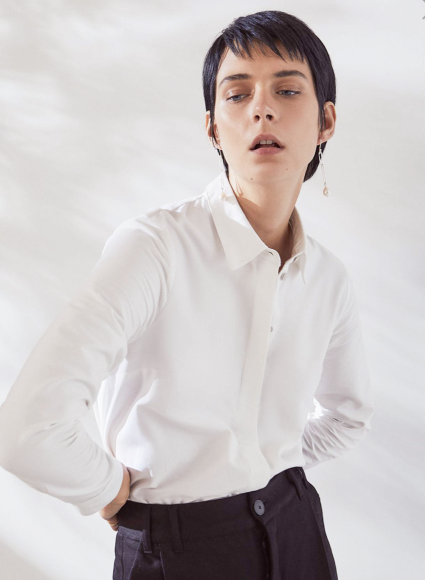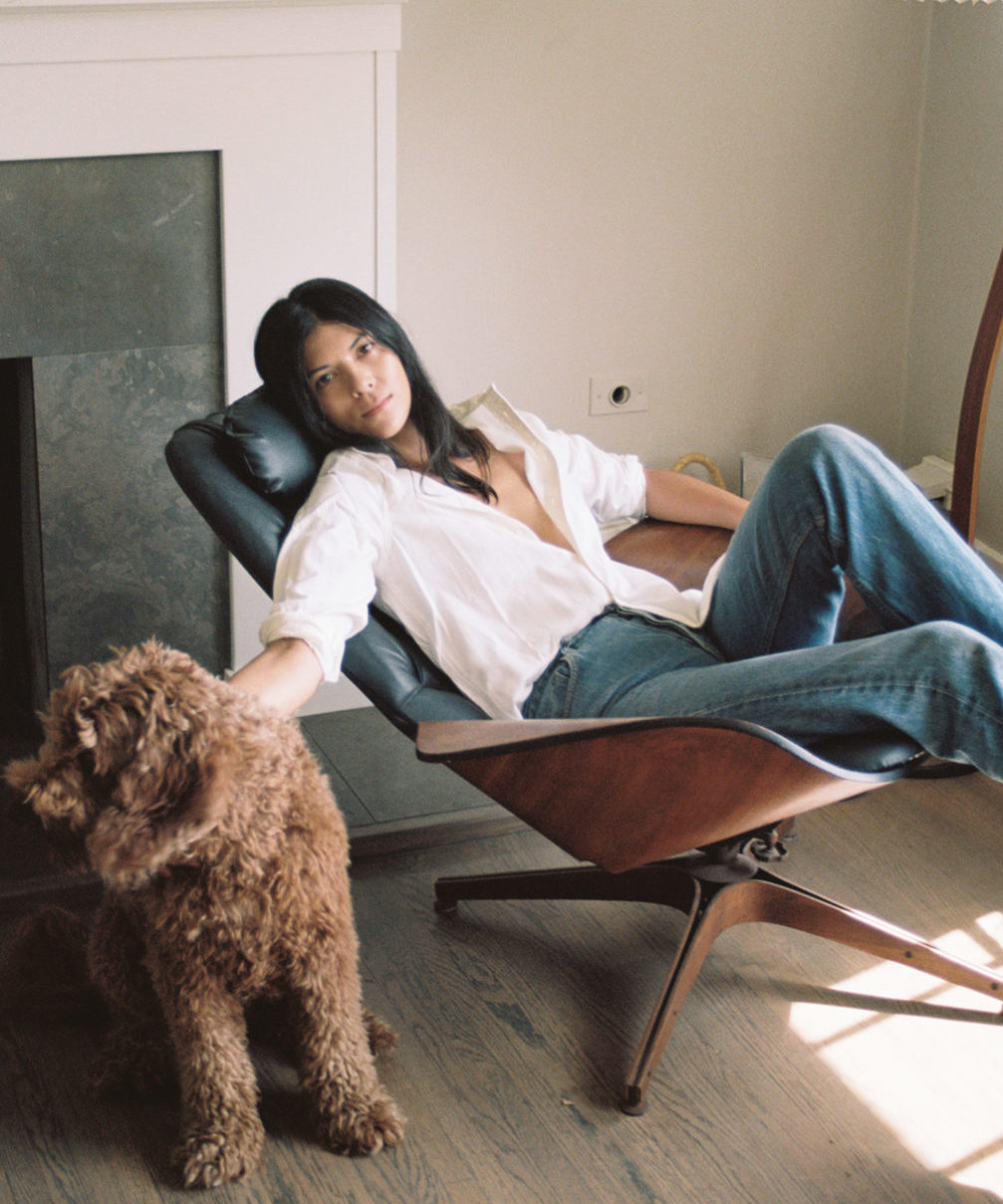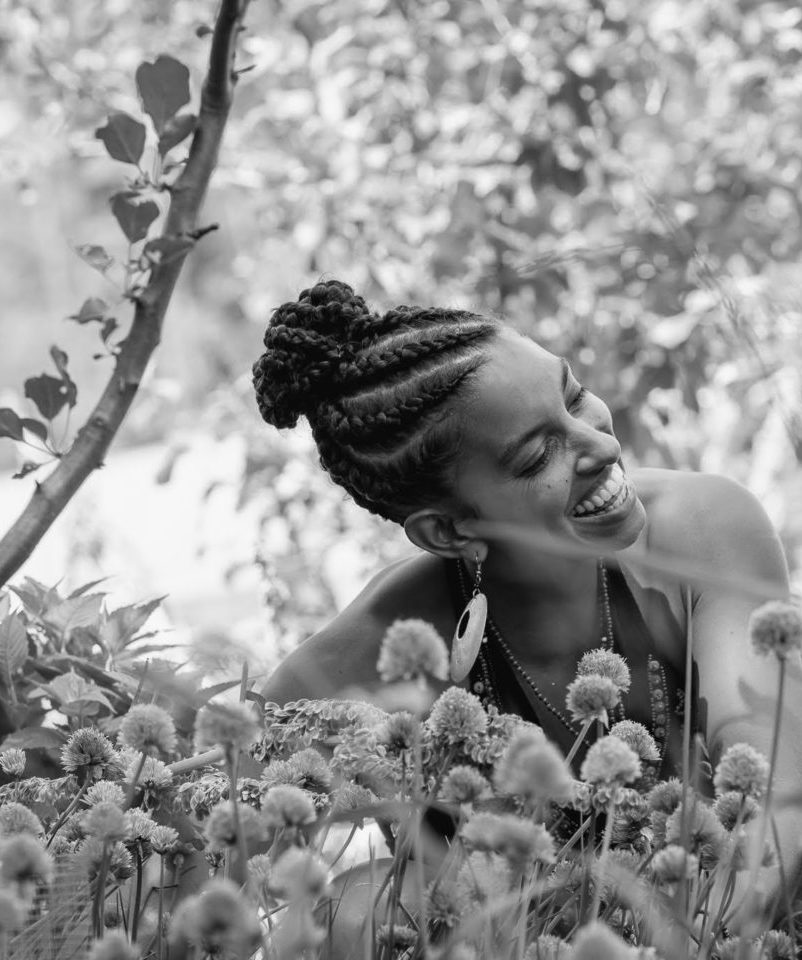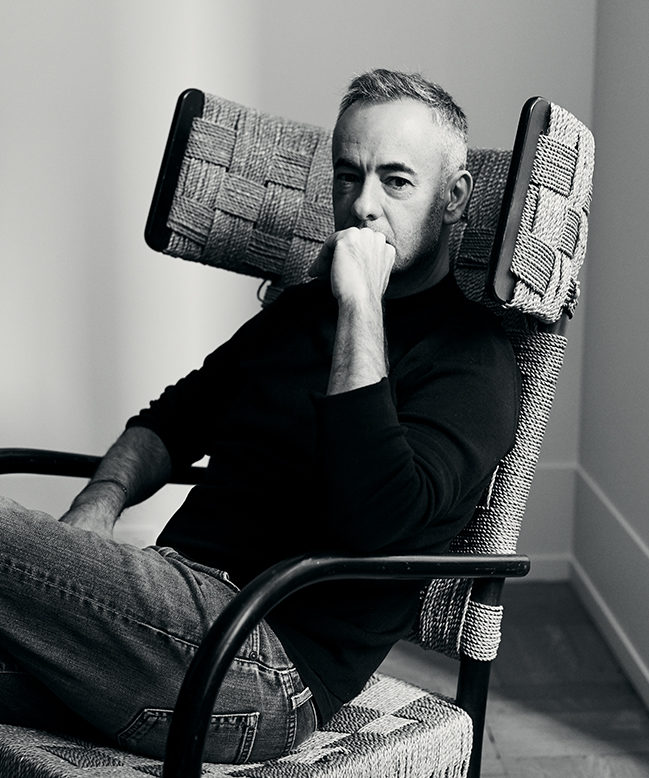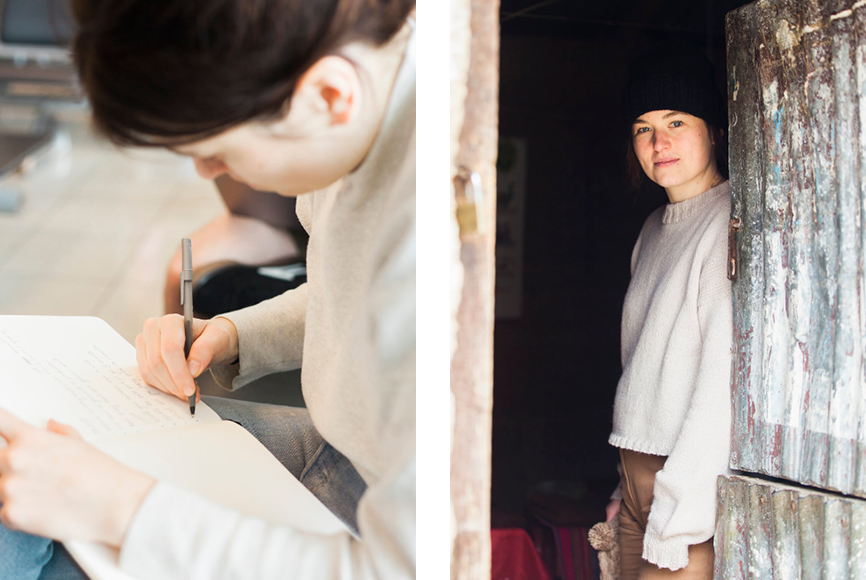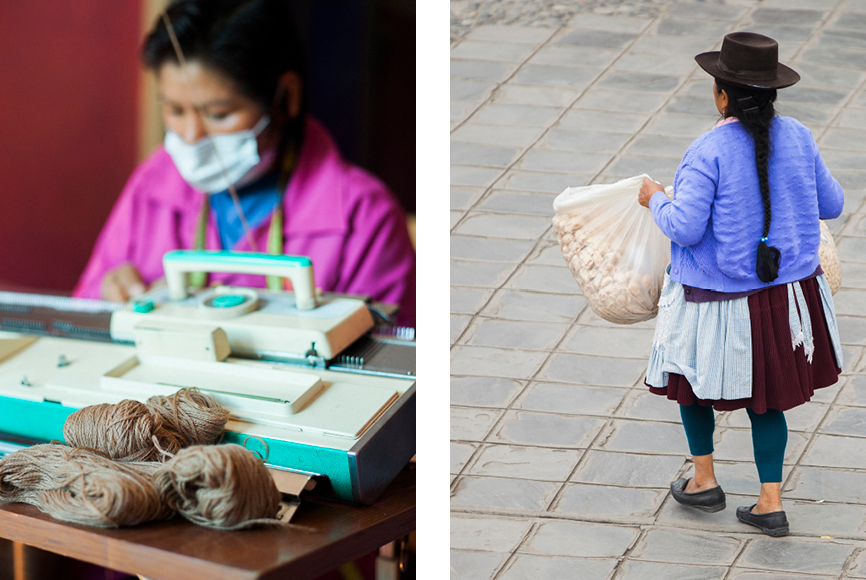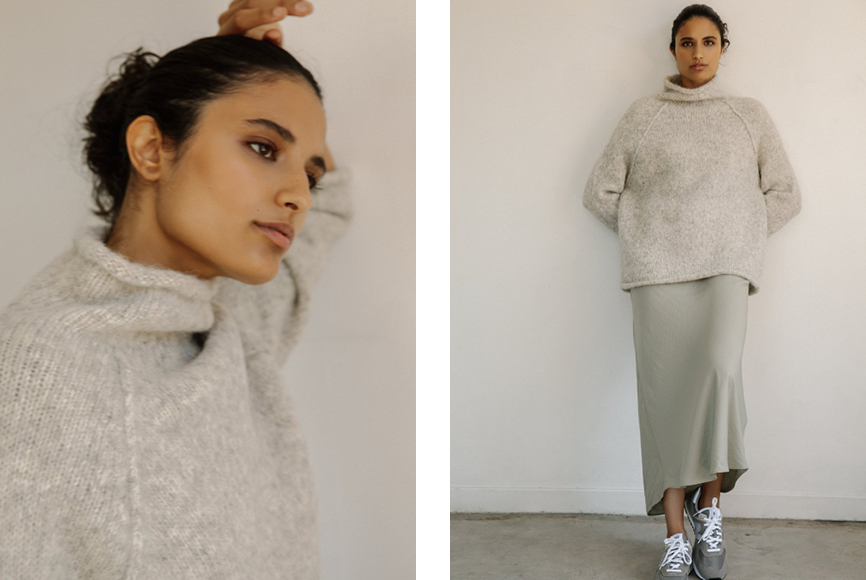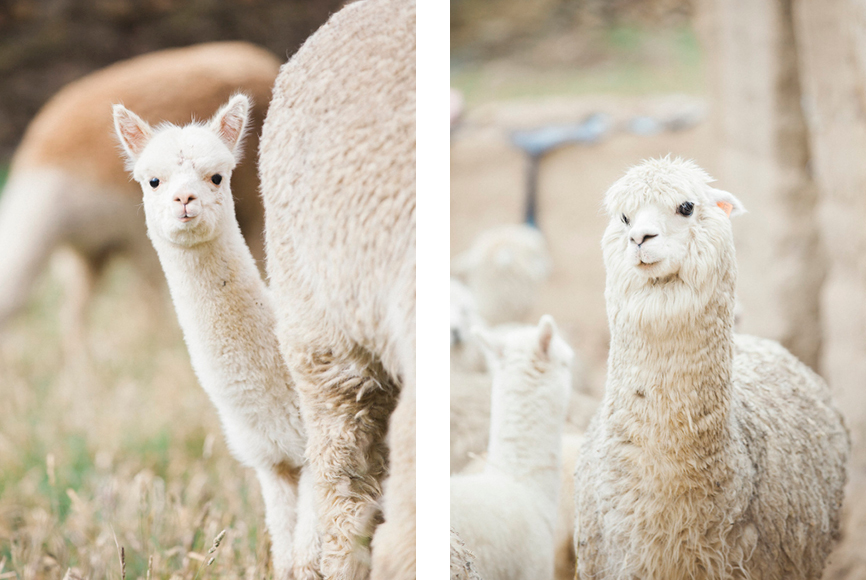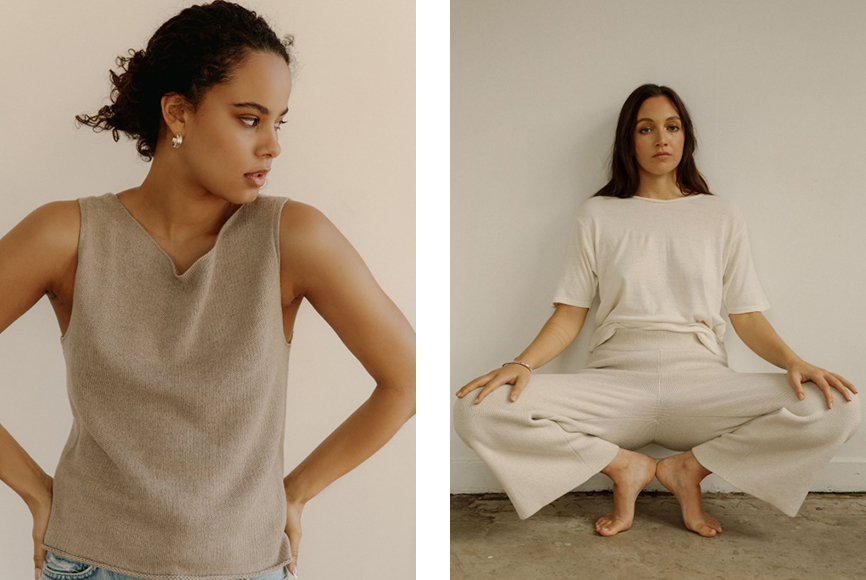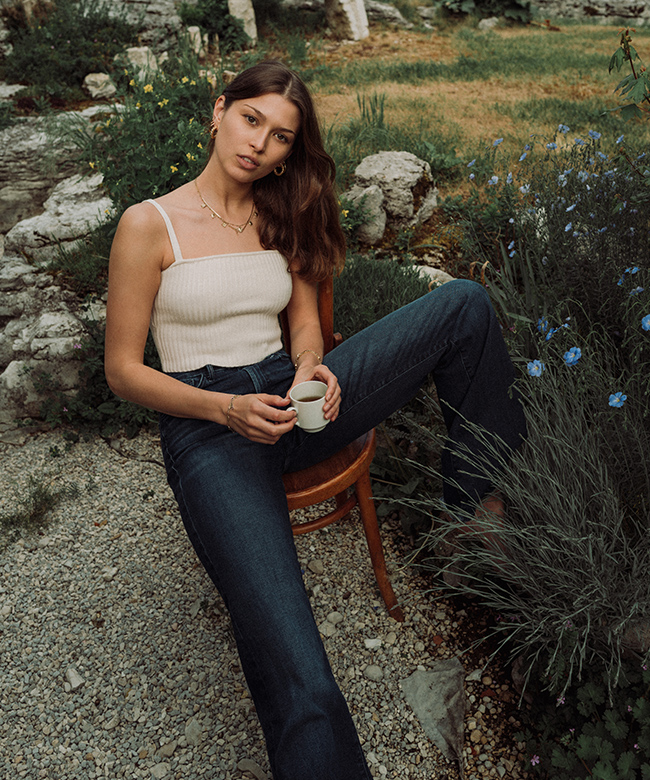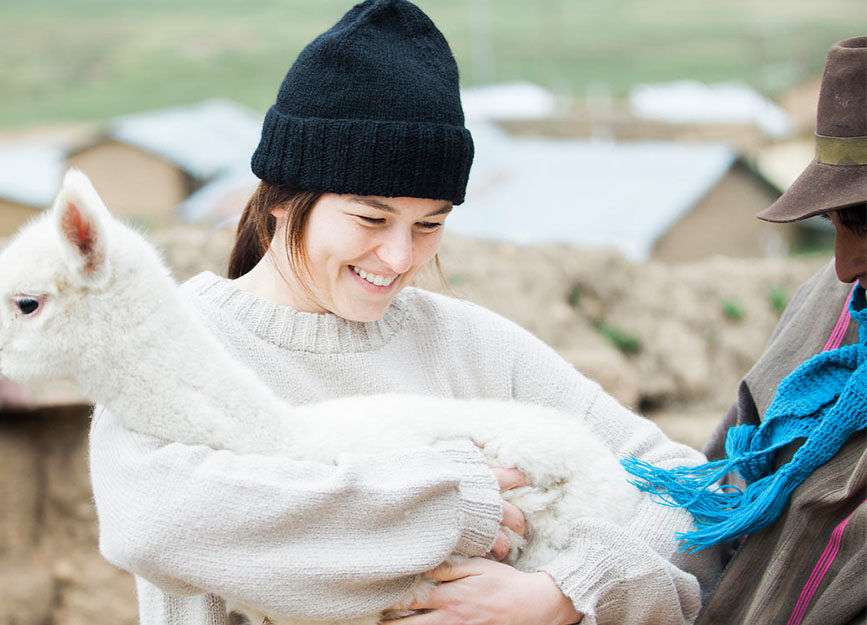

@rebecca_benoit
@rebecca_benoit
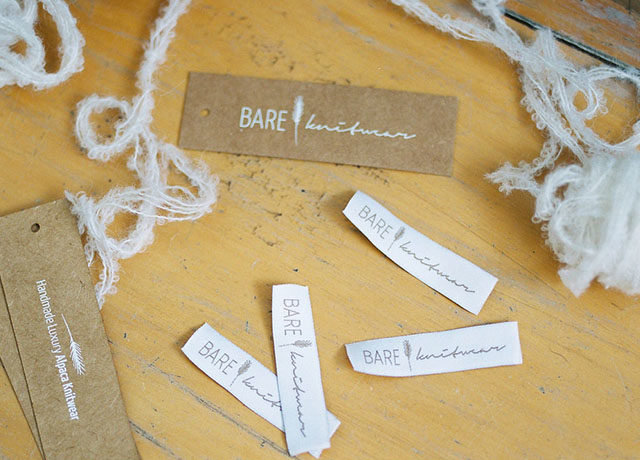

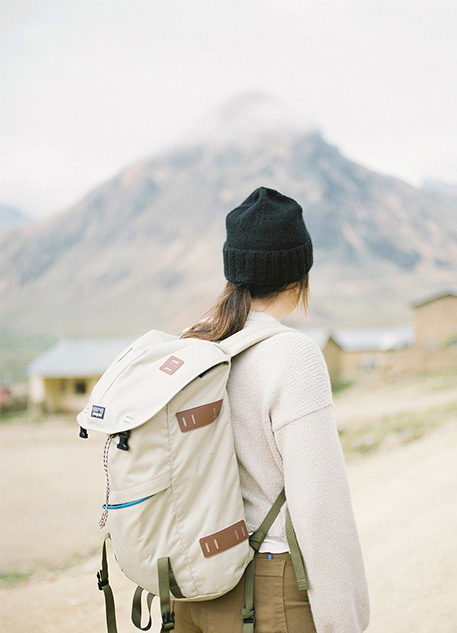

@rebecca_benoit
Fashion
Interview with Kelsey Adair, Founder of Bare Ethical Knitwear
We are so proud to stock the amazing Canadian ethical knitwear brand, Bare Knitwear, which is why we wanted to share more about the story and team behind the company. In this editorial we had the pleasure of interviewing the lovely Kelsey behind Bare Knitwear, who is incredibly transparent about the brand and their sustainability.
Tell us a bit about your initial vision for Bare Knitwear- what did thoughtful knit wear mean to you?
The vision for the brand developed while I was working for a local Vancouver based brand in 2012. The brand was in the process of moving their production to Vancouver from China and placed an emphasis on the use of sustainable materials. As I was just starting to learn about ethical production and sustainability, I would have discussions with clients in the shop and realized that many people viewed ethical fashion as
un-stylish. These conversations helped develop my initial vision for Bare Knitwear. The same vision holds today, to merge heritage artisanship with modern design to create luxurious knitwear that is kind to the planet and people. I adopted the term thoughtful knitwear a little later in the process when I truly understood what went into developing a garment slowly and intentionally from start to finish.
What led you to Peru in order to create the line?
After the initial vision for Bare Knitwear in 2012, it took me a couple of years to figure out how I was going to execute from a production standpoint. I had been hand knitting scarves and hats in my apartment after work and on the weekends experimenting with different materials and designs. A friend of mine who had been living in India and working with artisan co-ops introduced me to the idea of producing in collaboration with artisan groups. Artisanal manufacturing made sense, as we wanted to produce in small quantities and find a partner that could execute our vision to produce handmade knitwear in a fair way. After a couple years of speaking with various organizations, Peru made the most sense for several reasons. Logistically, the natural fibres I was seeking were available in abundance and knitwear production is a time-honoured tradition that holds an important place in Peru’s history, economy, and culture. In the summer of 2014, I flew to Peru and fell in love with the people and the process.
What is so special about producing in Peru and why is it an ethical place to be doing business?
One of the main aspects that attracted me to Peru was the rich history of textiles. The idea to make handmade knitwear really took on a new meaning after my first visit. I truly understood the importance of honouring, preserving, and respecting traditional craftmanship. I’ve been very lucky to have the opportunity to visit small Andean towns and learn firsthand the impact that collaborating with small producers and artisan groups holds. Many Peruvians learn how to knit from a young age, and for many
living in remote regions of the country, utilizing traditional knitting techniques provides a means to support themselves and their families. Peru is so special because of the vast array of traditional handicraft techniques that have been utilized for generations. In addition to using hand-operated looms, we use hand knitting, felting, and crocheting. Utilizing traditional techniques allows us to employ artisans based on an existing skill set, helping to remove employment barriers and empowering the artisans by providing a
steady stream of income. Producing in Peru is so special for us because the story and processes behind the product are just as beautiful as the final garment.
How do you assure transparency and ethics when you are operating yourself from Canada?
From the beginning, I’ve always prioritized in-person annual visits with our partners in Peru. It’s integral to spend time at your production facilities developing face-to-face relationships with the operators and artisans producing the products. We’ve toured different facilities and farms in Peru over the years and have been able to see the conditions and experience the culture firsthand. We’ve had to deny partnerships with seemingly stellar manufacturing ethics after having had marginal in person initial visits. Regular trips to Peru have also allowed us to gain a deeper understanding of not only our supply chain but the business models of our partners, their processes and limitations. Developing this understanding enables us to have a better insight into the daily operations and weighs heavy into developing trust and accountability with our partners throughout the supply chain. We view the brand to factory relationship as a partnership rather than a client to supplier relationship. We’ve always chosen to work with small producers as it allows for a direct line of communication with the owner and operator.
How do you consider carbon emissions in producing internationally as well?
Our own production and contribution of carbon emissions became more of a consideration as the brand and collection grew. Our understanding of what it means to be an environmental steward has also developed over the years. We have been able toimplement and adopt a few processes that have helped us reduce carbon emissions.We prioritize a simplified and consolidated supply chain. Everything we source and produce all happens within Peru. There are some seasons where we work with various manufacturers in Peru for different types of products, but we try to keep manufacturers within the same region. This also allows us to share manufacturing materials, packaging and labels. We are also very mindful about consolidating our production shipments from different suppliers to ensure only a few major transports per year. Since the beginning of Bare Knitwear, we have followed a slow fashion philosophy. We limit our collections to two a year and intentionally design our pima cotton collection to be sold year around.
Knitwear development is an extensive and detailed process. Often before the sample is constructed, we need to see and feel in person, multiple swatches in different fibres, stitches, tensions, and ply-counts. This is another reason why we prioritize visits to Peru when we are developing new collections and styles.
Can you tell us a bit about the materials you use and how you make sure cruelty to the animals is something that doesn’t happen?
All the fibres and materials we work with are native to Peru, primarily including alpaca and merino wools, and 100% Pima cotton. We select our fibres for their incredible hand, wearability, strength, and environmental properties. The dye used in our products comply with REACH and OEKO-TEX standards. Next year, we are excited to be moving towards the use of more natural, un-dyed alpaca in our collections.
By visiting in person, we’ve always worked with manufacturers and suppliers who we trust their personal and business ethics. Although we have been able to visit only a fraction of the farms they work with, we were able to see the positive treatment and living conditions of the animals. Traceability of the fleece has historically been difficult to trace and monitor in Peru. The industry as a whole is now seeing a huge paradigm shift in how the supply chain is monitored. Social fairness and animal well-being are seen as equally important. Part of this shift has come from the power of the consumer! This change is quickly bringing about new policies, protocols, and the need for transparency.
Our distributors are working with The Textile Exchange, a non-profit, who creates and puts forth industry best practices and has been on the forefront of monitoring and verifying the textile industry in Peru. This includes verifying the high potential for quality animal welfare such as health, behavioral freedoms, and overall well-being. They utilize an independent third-party verification system to assure and certify the well well-being of the animals. Our distributors have committed to working with the Textile Exchange in committing to and setting targets in to be certified with the Responsible Animal Standard and have already begun this process. Next year, 2022 will be the first year that the yarns will be available that are farm RAS certified for us to purchase. Our goal is to move towards a complete use of RAS certified products in our pieces and of course continue to visit in person.
We’ve always chosen to work with distributors who partner with small farms throughout Peru. It’s important to recognize that Alpaca serves as a lifeline for many Peruvian farmers living in the harsh conditions of the Highlands. One visit to a farm was especially eye opening. Speaking with the farm owner Marcelo, we learned the true importance of caring for the alpacas. He stressed the importance of living in co-existence with the animal, his environment and treating the animals with respect. When they are treated well, they grow better quality fur and help his family and their community survive.
Why is alpaca such a sustainable fibre?
Alpaca’s are pretty special as they are very low maintenance animals with a light footprint. They are herbivores that live and graze off the land and require less water and food than most animals. Their hooves are padded, thereby preventing damage to the natural terrain that they inhabit. From a manufacturing standpoint, Alpaca fleece is hypoallergenic and doesn’t contain lanolin or grease. Therefore it is easy to clean without the use of chemicals or harsh detergents. Thanks to its insulating wool, Alpacas survive the harsh and varying conditions in the Peruvian Andes. Alpaca is a strong, durable fibre and finished pieces don’t require regular cleaning. When treated and cared for correctly, they can be cherished and worn for years.
Also we love the use of pima cotton which is indigenous to Peru-can you tell us a little about some of the benefits of using it in fashion?
We started using Pima cotton last year as an alternative to wool. Our goal with the Pima Collection is to provide garments that are less seasonal and can be worn year around. Pima cotton can be cozy but also light and breathable. It is grown in optimal conditions along the Northern Coastlines of Peru and requires significantly less water and pesticides to grow than conventional cotton. The long, smooth staple fibre of Pima cotton is what distinguishes Pima cotton garments from those made from conventional cotton. A longer staple fibre provides increased strength and life span and helps combat pilling and abrasion. It also contributes to the soft and silky hand of the garment and lustrous appearance. Bonus – it’s very easy to care for!
What Bare pieces are you living in this season?
This season, I’ve found myself gravitating towards the Classic Crew. Vancouver weather has been a bit all over the place this Autumn/Winter, so I love that I can wear it in the office and layer it easily for cooler days. Also, I’m a very simple dresser and the classic crew fits easily with anything in my wardrobe!
What are you most proud of when it comes to what you have created with Bare?
I am most proud of staying true to the values and brand pillars in which the company was founded on and not compromising our ethos or integrity for the purpose of faster growth and larger margins. I admire and respect the companies that don’t waiver in their values as they grow. For us, that’s meant slow and intentional growth alongside our partners and often doing things the hard way. I’m proud we’ve been able to develop a solid, sustainable foundation and infrastructure that is able to not only support the growth and evolution of the brand but also the independent retailers we partner with and the incredible businesses and artisans in Peru who bring our vision to life.
Finally, what does sustainability mean to you?
The term “sustainability” is often associated with how we interact with and or care for the environment. This rings true, however, I believe we must take a broader systematic approach and point of view. Just as the environment is made up of a series of systems, so is human existence. To be a steward of the environment, and furthermore, a participant in the human experience, we need also look to include other factors such as social fairness, economic inclusivity, and the refashion of policy. Only when all these factors are seen as a whole can we better prepare, plan, and create present and future change.
It’s easy to become hyper focussed on one area of the business at a time. I realize the need to always look to incorporate what impact we make on the environment, the wellness of people, treatment of animals and the ability to usher industry change. This then allows me to make the best all encompassing decisions. This leads me to a continuous re-evaluation and a commitment to improvement as I (we) grow and evolve. It means doing better when you know better.












